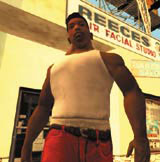Parallel dimension
Video-game designers have to create an environment which is both engaging and believable if they want to appeal to a growing market.

Another challenge for game designers as they embrace the mass-market revolution is how to create more emotive games through better use of storylines and dialogue. Chris Bateman, founder of International Hobo, an independent game design and script consultancy that has worked on games such as Empire’s Ghostmaster, believes that ‘The industry is coming around to the needs of narrative. Not every game needs narrative, but the mass-market audience responds more easily to a game that motivates them in this way.’
But while many mass-market video-game titles such as Electronic Arts’ Lord of the Rings franchise actively borrow from film licences, while others seek to replicate a more film-like experience for their players, Bateman is of the opinion that games do not need to kowtow to films when it comes to creating emotive game design. Instead they need to innovate from within to create something more fitting for the medium. ‘There is much work for the game writers and writer-designers to do in creating a narrative language for games. At the moment, we tend to borrow from film, which is restrictive.’
With big-hitters like GTA:SA, Half-Life 2 and Halo 2 dominating the charts and providing absorbing action and sophisticated storylines, video-game design has proved just how far it’s come since the height of sophistication was represented by three blobs and a line. After a long adolescence, games, and their design, are growing up, and with it bringing the experiences of this truly interactive entertainment form to a new audience.
-
Post a comment



